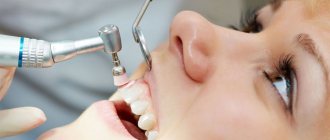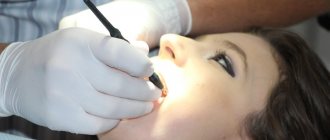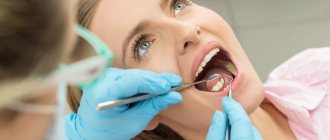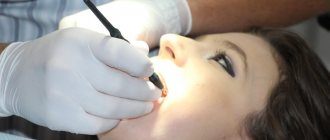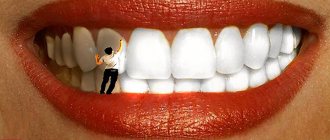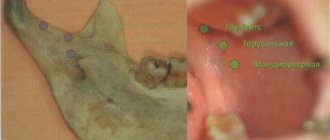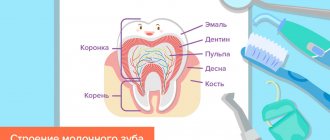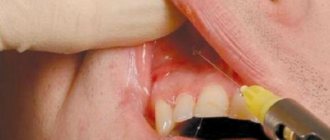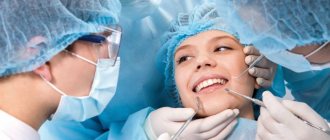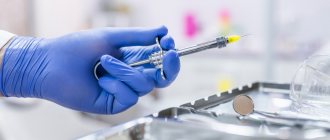You've probably come across the name of a dental service such as professional oral hygiene in an advertisement or on the Internet. And many people reasonably ask: why do you need to do oral hygiene at the dentist, if you can brush your teeth at home with a brush and toothpaste, use rinses and balms that are sold in the store?
The reason is quite simple: even regular and properly brushed teeth at home does not help to completely cleanse the oral cavity of soft plaque; it continues to accumulate and various pathogenic microorganisms actively multiply in it.
Their activities are fraught with the development of caries and inflammation of soft tissues. In addition, plaque can change the color of tooth enamel and teeth look unsightly.
professional oral hygiene procedure in dentistry helps to effectively remove plaque from dental surfaces and from all hard-to-reach places and thereby carry out effective prevention of almost all dental diseases
of dental oral hygiene include what methods are used to carry out the procedure? So that you can have answers to all these questions, we have prepared detailed material on the topic of professional dental and oral hygiene.
Dental and oral hygiene in dentistry: why is it so important to undergo the procedure regularly?
The main task of oral hygiene is to remove hard and soft plaque from the surfaces of the teeth, as well as other areas and areas of the mouth.
Regular and timely removal of dental plaque will be the best prevention of caries and other dental diseases. In addition, oral hygiene in dentistry contributes to:
- Formation of healthy strong teeth;
- Complete destruction of harmful microorganisms that live in large numbers in the human oral cavity;
- Prevention of periodontal and gastrointestinal diseases.
Professional dental and oral hygiene helps keep your teeth enamel in excellent condition - after brushing, your teeth become whiter and your smile looks attractive! Professional oral hygiene is especially recommended for people with bad habits: smokers, patients who abuse strong tea and coffee. The procedure is also indicated for people with poor immunity, because often malfunctions in the body’s immune system are expressed precisely in the appearance of caries and inflammation in the oral cavity.
Regular dental hygiene will ultimately result in significant savings on dental treatment costs.
Which is inevitable if the teeth are not properly cared for and are covered with a thick layer of plaque. So, professional oral hygiene is certainly not a waste of time and money; on the contrary, it is a valuable investment in your own health!
What kind of plaque is there and why is regular teeth brushing not enough?
Soft plaque on teeth is divided into two main types - colorless and colored.
Colorless plaque appears, as a rule, when the oral apparatus is at rest, that is, at night during sleep or in between meals. It is quite easy to clean off with a regular toothbrush; it does not deposit in the spaces between the teeth, but if it is not removed in a timely manner, it can create an unpleasant putrid odor and taste.
Colored plaque is much more dangerous; it is from this that tartar subsequently appears. This is an ordinary plaque that has not been removed for a long time and is gradually stained by food, tobacco smoke and much more. This is what gives teeth an unpleasant yellow-brown color, and then causes various diseases.
Not everyone can understand that a toothbrush cannot cope with plaque. The fact is that the tooth is only partially located on the surface of the gum, a significant part of it is invisible to the eye, but the health of the teeth depends on it.
There is always a small cavity between the tooth and the gum in which bacteria accumulate and live, and accordingly, plaque can also form there. It also causes the formation of tartar, but this entire process is not noticeable because the inflammation occurs under the gum. Therefore, even snow-white teeth do not mean that you do not have problems. A toothbrush cannot penetrate this cavity; only a professional can clean it.
The accumulation of tartar under the gums causes inflammation, the first symptoms of which will be bleeding and slight soreness. But few people attach importance to them and solve the problem by using mouthwash; as a result, the symptoms decrease, but the problem itself only gets worse.
Gradually, the inflammation turns into periodontitis, and if you do not consult a dentist in a timely manner, it can lead to tooth loss. All this can be avoided if you resort to professional teeth cleaning at least once every six months.
Indications and contraindications for professional oral hygiene in dentistry
Like any other medical procedure, dental and oral hygiene has its own indications and contraindications. Indications include:
- The presence of soft or hard plaque on the dental surfaces;
- Inflammatory process affecting the gums;
- Presence of tartar;
- Prevention of the development of caries and other dental diseases;
- Enamel pigmentation as a result of smoking, frequent consumption of tea and coffee.
USEFUL TO KNOW: The dental hygiene procedure also helps to brighten them. After all the activities, the teeth brighten by about one to two shades. This is already a good result, but if you need perfect whiteness, then it is better to use an additional service of modern dentistry after hygiene - professional whitening!
Professional dental and oral hygiene must be performed before prosthetics, implantation, orthodontic treatment using braces, installation of veneers and lumineers.
Also, the professional hygiene procedure can be part of complex therapy in the treatment of diseases such as periodontitis and periodontal disease. It is also recommended for expectant mothers to undergo professional cleaning of their teeth and oral cavity in dentistry: during pregnancy, the risks of caries increase significantly and high-quality oral hygiene will be an excellent prevention of this disease!
However, in some cases it is impossible to maintain oral and dental hygiene. For example, with stomatitis, general infectious diseases of the body in acute form. First, it will be necessary to eliminate these diseases and only then will it be possible to undergo the procedure.
Professional oral hygiene is not recommended in case of severe thinning of the enamel or erosion of the enamel coating of the teeth. Under such circumstances, the procedure can do more harm than good!
Indications and contraindications for professional dental and oral hygiene are determined at a dental appointment: the doctor will conduct an examination and tell you whether in your case it is possible to undergo the procedure immediately or whether preliminary measures will be needed that will improve the quality of hygiene and make it as safe as possible for you!
Air-abrasive technique AirFlow
When cleaning the oral cavity and teeth using this method, the main instrument is used - a device that supplies a water-air stream. The latter is quite powerful and contains small abrasive particles. In addition to abrasive, this jet also contains water and air. All this together removes pigmented, soft plaque. Also, the AirFlow technique can cleanse periodontal pockets of plaque.
This technology of oral and dental hygiene is considered one of the most modern. It does not cause any discomfort, does not injure the enamel, and also has minimal contraindications.
Oral hygiene in dentistry: what is included in the procedure?
In general, oral hygiene in dentistry is a complex event, which includes several procedures at once. Let's consider all these procedures in detail.
Inspection
The patient comes to the dentist, to the doctor’s office, and the specialist conducts a thorough examination of the oral cavity, determining the indications for professional hygiene and eliminating possible restrictions on its implementation. Also during the inspection, a cleaning method is selected. There are several technologies for removing plaque, and we will also tell you about them in a separate section of the article.
Cleaning
To remove hard and soft plaque during dental and oral hygiene, different techniques can be used. Each of them has its own characteristics, pros and cons, which are best familiarized with in advance.
Mechanical cleaning
This method is rarely used in modern dentistry for dental and oral hygiene.
It involves the use of hand-held, outdated instruments that can easily injure the sensitive soft tissues of the oral cavity. The only and very relative advantage of mechanical cleaning is the low price of the service. Photos before and after:
Ultrasound technique
This technology for removing plaque is considered the most modern and safe.
In it, the doctor will use a special installation and instrument - an ultrasonic scaler. This device is capable of creating ultrasonic waves of controlled frequency that destroy not only soft and pigmented plaque on dental surfaces, but also hard tartar. Photos before and after:
Ultrasound is capable of removing plaque not only on dental surfaces, but also in the most inaccessible areas, including periodontal pockets. Such ultrasonic cleaning capabilities are especially in demand when carrying out dental and oral hygiene in patients with periodontitis and periodontal disease.
Air-abrasive technique Air Flow
With this type of teeth and oral cavity cleaning, a special device is used that delivers a powerful water-air jet saturated with small abrasive particles to the dental surfaces.
Air, water and fine abrasive ideally remove soft and pigmented plaque and cleanse the area of periodontal pockets. The Air Flow technique is one of the most modern technologies for dental and oral hygiene; it is painless, does not injure tooth enamel, and has a minimum of contraindications.
Photos before and after:
USEFUL TO KNOW: Most often, Air Flow and ultrasonic cleaning are used in combination, because the first technology perfectly copes with soft and pigmented plaque, but is practically useless against old tartar.
Another cleaning technology used in modern dentistry is the laser technique. It uses a directed laser beam, which not only destroys plaque, but also destroys all pathogenic microflora in the oral cavity. The laser cleaning procedure is safe, it does not harm tooth enamel, and does not cause increased sensitivity of teeth and gums. In addition, laser cleaning promotes accelerated healing of various microcracks and wounds present in the oral cavity.
What cleaning method will be used in your case? You will decide this issue together with your doctor, because each method of cleaning dental surfaces during dental and oral hygiene has not only indications, but also contraindications.
But cleaning dental surfaces is far from the final stage of professional dental and oral hygiene procedures. After removing plaque, you will need to carry out the stages of polishing and grinding the surface of the teeth and remineralizing the tooth enamel.
Polishing
Polishing of dental surfaces is a mandatory step in dental and oral hygiene in dentistry.
High-quality polishing of teeth gives them a beautiful shine and perfect smoothness, thanks to which plaque does not accumulate on the enamel. The polishing stage is carried out during dental and oral hygiene with a specialized instrument.
Remineralization
Remineralization is a procedure that represents the final stage of dental and oral hygiene.
During this stage, the specialist treats the surfaces of the patient’s teeth with preparations containing fluoride and calcium. This treatment prevents the occurrence of unpleasant hypersensitivity of teeth, acts as an excellent prevention of caries, and in addition helps to strengthen and restore tooth enamel. Oral and dental hygiene ends with a detailed consultation with a doctor. The dentist explains in detail to the patient what dental care should be like after the procedure, and assists in choosing products and tools for everyday dental hygiene.
Mechanical cleaning
Of course, doctors no longer use sharp instruments to chip away plaque. Manual cleaning is performed with brushes and abrasive pastes - the dentist cleans the surface of remaining plaque and dust, polishes and smoothes out uneven enamel.
Stages of hygienic cleaning
At the InWhite Medical clinic, doctors use all the stated methods to completely and effectively remove plaque, and also teach the patient how to clean their teeth on their own. Comprehensive oral hygiene includes four stages.
- Consultation. The specialist identifies contraindications, finds out the patient’s lifestyle, his habits and explains where the plaque came from.
- Education. The doctor shows you how to properly clean your mouth, tells you how much time to spend on daytime and evening procedures, how to use an irrigator, mouthwash and dental floss, and selects the right brush and toothpaste.
- Cleaning. The oral cavity is treated with an antiseptic solution and the procedure begins. Soft plaque is removed using Air Flow, hard plaque is removed with ultrasound. Finally, polish the surface with a brush and abrasive paste.
- Strengthening. Additionally, the patient is given a remineralizing gel and paste containing fluoride to strengthen the enamel and enhance the cleaning effect.
Children under 15 years of age are not recommended to undergo professional ultrasonic cleaning, as children's enamel is too fragile. However, you should not completely abandon the procedure, because this way you will not only ensure the health of your child’s teeth, but also teach him to take care of the oral cavity. Oral hygiene in children is carried out using soft abrasives and low pressure using the Air Flow method.
Is it painful to undergo oral and dental hygiene at the dentist?
Many people are afraid to visit the dentist and experience strong negative emotions even before undergoing such simple procedures as dental and oral hygiene. In this case, there is no need to be afraid: ultrasonic cleaning, polishing and remineralization - all these activities do not cause pain!
However, if you have increased tooth sensitivity, deep periodontal pockets will have to be cleaned - local anesthesia can be given, which completely removes all painful and unpleasant sensations during dental and oral hygiene.
And our dental clinic in Moscow - “Firadent” is ready to offer you two innovative services - dental and oral hygiene under sedation, that is, in a dream, as well as teeth cleaning under a microscope!
Recommendations after hygiene
After professional hygiene, it is recommended to adhere to several rules:
- Quit smoking for 1-2 days. Nicotine penetrates very deeply into the enamel, thereby giving an unpleasant yellow tint to the teeth. In the first two days after cleaning, the enamel is very susceptible to various pigments, so in order to maintain excellent results, bad habits must be abandoned.
- Limit the consumption of coloring products. White diet. Eating foods such as beets, carrots, tea, and coffee can lead to excessive pigment accumulation in the first days after visiting the dentist.
- Avoid eating aggressive foods. This category includes spicy, salty, hot and cold foods. Such irritating factors can provoke manifestations of increased sensitivity of teeth.
If you follow the recommendations, the result will last longer and there will be no side effects.
How to care for your teeth and oral cavity after a professional dental hygiene procedure?
Of course, you should also carry out dental and oral hygiene at home. Your doctor will tell you in detail how to do this correctly; he will also help you choose the right care products: paste, brush, and may recommend the use of additional tools - dental floss, brushes, irrigators.
General rules for dental and oral hygiene at home will be as follows:
1. Choose brushes of the correct degree of hardness for brushing your teeth and, best of all, with synthetic bristles;
2. To maintain high-quality oral hygiene, it will be useful to change the brush at least once every three months;
3. Teeth need to be brushed twice a day: in the morning and immediately before bed;
4. During oral hygiene procedures, it is imperative to brush not only your teeth, but also your gums and tongue. These measures will prevent the active accumulation of plaque and act as an excellent prophylaxis against periodontal diseases;
5. Don’t forget that you need to clean not only the surfaces of your teeth on both sides, but also the spaces between your teeth. To do this, it is recommended to use dental floss or special brushes.
Home oral and dental hygiene is not enough to completely remove plaque and tartar and monitor the appearance of caries, and therefore you need to visit the dentist 1-2 times a year and undergo a professional examination!
Laser therapy method for teeth cleaning
The laser therapy technique is the most modern today. Its effect is based on the evaporation of liquid. The fact is that there is much more of it in plaque and tartar than in enamel. The laser, evaporating liquid from deposits, allows you to destroy the stones layer by layer.
Hygienic cleaning of teeth with a laser is carried out at a distance, without contact of instruments with oral tissues. Thus, this technique is completely painless. When it is carried out, there is no chance of infection, and the laser itself has an antiseptic effect.
Another advantage of laser cleaning at the dentist is that it helps to further whiten the enamel. Thanks to this, there is no need for another procedure. In addition, the light flux has a bactericidal effect and effectively fights pathogenic microorganisms, helps in the regeneration of wounds and prevents the development of caries. The entire procedure does not require any special preparations and is painless for the patient.
Laser teeth cleaning is contraindicated under the following conditions:
- Rhinitis and ARVI;
- The presence of implants, including pacemakers, in the patient’s body;
- Severe infectious diseases (HIV infection, tuberculosis, hepatitis);
- The presence of orthopedic structures in the oral cavity;
- The patient has a history of epilepsy and asthmatic attacks.
Price for professional dental and oral hygiene in dentistry
To find out the exact price of professional dental and oral hygiene services, you will need to come to the clinic and undergo an examination by a dentist. This is important because the type of teeth cleaning will be determined based on your individual characteristics. Perhaps you have contraindications for some type of cleaning, or in your case a certain technology will work optimally.
If you want to find out the maximum useful details not only about the cost of a professional oral hygiene procedure, but also about the stages of its implementation, the doctors of our dentistry in Moscow “Firadent” will be happy to help you!
You can get a detailed free consultation from our specialists at any time convenient for you: just contact us by phone number and make an appointment!
"Firadent" - we will help make your teeth healthy and your smile bright and attractive!
How much does the procedure cost?
The price of professional hygiene starts from 10,000 rubles. for a full range of hygiene procedures for both jaws. You can be confident in the quality and safety of the materials used at Dr. Lemberg's Dental Clinic. All manipulations are performed only by qualified specialists.
Oral hygiene is the most important aspect of oral care! Taking care of the cleanliness of your teeth means taking care of their health. A good level of hygiene and regular visits to the dentist can prevent many diseases at the earliest stages. The specialists at Dr. Lemberg Dental Clinic will take care of your smile and help you maintain healthy teeth!
Benefits of professional oral hygiene
- Hypoallergenicity and safety of the procedures performed, if all actions are performed by a professional, then no side effects should appear, except for increased sensitivity in the first two days.
- The effect of whitening is that due to the removal of all deposits on the surface of the teeth, the natural color of the enamel returns, the plus is that with such whitening its integrity is not compromised.
- When choosing the ultraviolet method, you will get beautiful, healthy, snow-white teeth that will remain that way for many years.
- Destroying tartar in the most inaccessible places is impossible to do on your own, and its accumulation can cause a severe inflammatory process, including tooth loss.
- Absence of painful sensations, the great advantage of this procedure is that it is practically painless, slight pain is possible during the first stage, but this can be solved with the help of local anesthesia.
- Quick and high-quality cleaning of teeth from contaminants; you won’t need to repeat the procedure for a long time, and it only takes an hour.
It also has its drawbacks, mainly increased tooth sensitivity and the possibility of gum damage. But all this passes quite quickly, and the effect of the procedure is long-lasting. So these disadvantages are quite minor.
